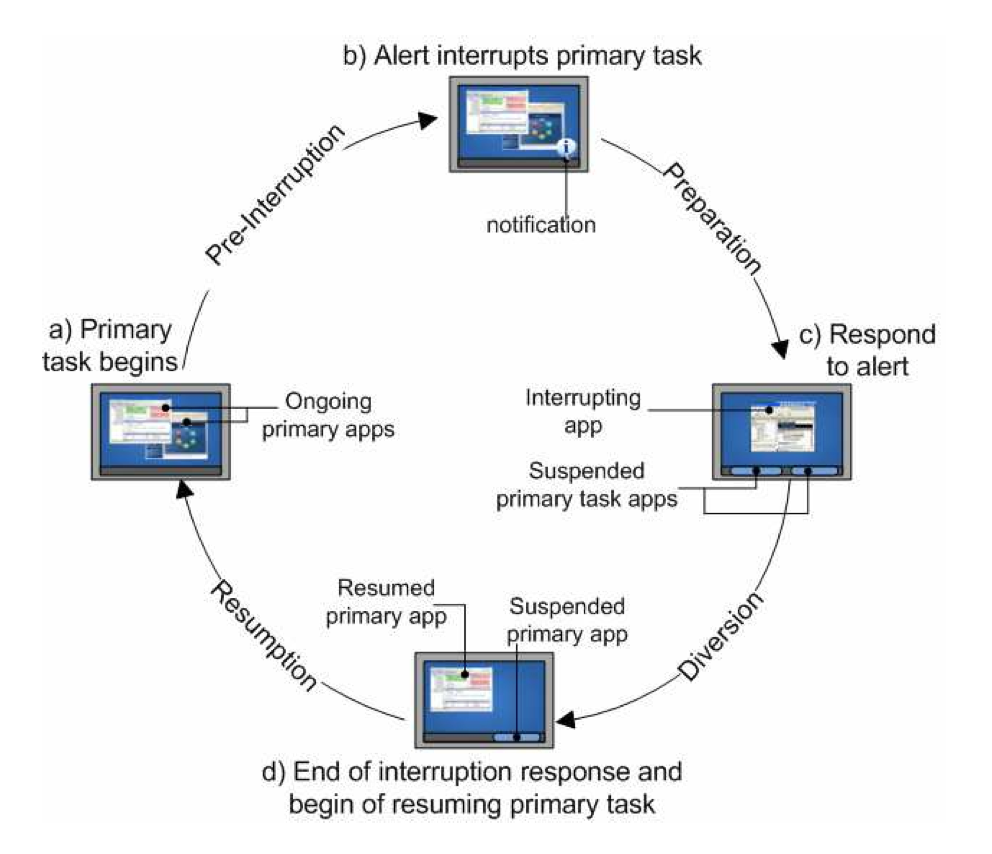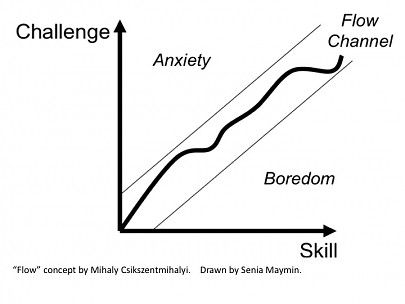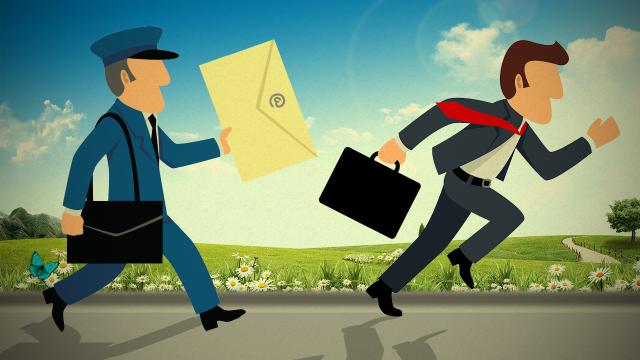Have you ever felt like all you do is check your email? In fact, our incessant need to respond to emails at work can be a huge distraction from important tasks, but it doesn’t have to be that way. You have to reinvest in finding flow — a deep state of focus.
This post originally appeared on the Crew blog.
Well, you may not spend all your time checking your email but you do spend about 28% of your time doing it. That translates into about 13-hours a week or 650 hours a year of email checking.
For those of us who work in a job where email isn’t our main responsibility, checking and responding to emails each day can take us away from our primary work, which results in less productivity.
Email And Productivity
Chuck Klosterman, writing for The New York Times, compared email to a zombie attack — you keep killing them, they keep coming. OK, so emails don’t actually turn us into flesh-eating-hell-beasts, but they do make us feel like we don’t have total control over our own lives.
- Workers switch tasks every 3 minutes, mostly due to email (around 36 times an hour).
- The sheer volume of emails we receive makes us feel like we are out of control.
- We are afraid to use email filters or other tools to help us handle our email because we don’t want to feel out of the loop.
That is a recipe for unhappiness and distraction.
Researchers at the University of Chicago and Microsoft decided to look into how email disrupts our work day by logging workers interactions with their computer and monitoring their tasks.
Say you have a primary task, like working on a report. Then you receive an alert telling you that you have a new email (that’s a diversion). Each time we experience a disruption at work we go through what is called an interruption life cycle, which looks like this:

What the researchers found was that the typical diversion caused by an email was 9 minutes and 30 seconds in length. Now that was just the time spent on the email itself. After that, it still took the participants of the study another 16 minutes to resume their primary task. That’s a lot of lost time.
Not only does email hinder our ability to accomplish the essential aspects of our workday, but it also contributes to the overall stress we feel about our job. Even going so far as to impact our ability to maintain and develop good relationships at work.
“Email can be a superficial blanket that distances you from real relationships where you’re really working together.” — Study participant
Would these problems go away if people didn’t have access to email? Well, one study wanted to look into what would happen if they did just that.
Researchers at the University of California followed around 13 information workers. The study logged workers’ computer interactions, stress levels, and also had the workers respond to a series of questionnaires. The purpose was to find out how people would use their time if they weren’t allowed access to their email.
“Without email, our informants focused longer on their tasks, multitasked less, and had lower stress.” — Researchers; Mark, Voida, & Cardello
It’s important to point out here that for these study participants (and in fact in all instances above), email was a secondary function or task of their employment. There are many people who respond to emails as part of their primary work.
The point here is to understand that we should be focusing on our primary tasks at work and when we don’t, we end up distracted, less happy, and less productive. The key, no matter what your job, is to find flow.
Finding Your Flow
Our productivity largely hinges on the kind of work you are doing and how motivated you feel about that particular task. For us to really feel motivated and accomplished at work, we have to enter a state of deep work (or flow).
Cal Newport is an author and blogger who writes about the concept of deep work. He defines it as:
“Cognitively demanding activities that leverage our training to generate rare and valuable results, and that push our abilities to continually improve.”
For Newport, the benefits of deep work are as follows:
- Continuous improvement of the value of your work output.
- An increase in the total quantity of valuable output you produce.
- Deeper satisfaction at work.
You know when you feel like your brain is going to explode from how hard something is, but you just keep hacking at it until you get it? You do it because it’s a rush, and a challenge, and you just know you have to finish something, and you won’t even breath one single breath until you do? Then when you finally finish it you feel a sense of pride and satisfaction.
In psychology this is sometimes called flow — a state of effortless concentration. We have trouble achieving it because we are usually trying to find a balance between challenge and skill while also dealing with distractions. When a challenge exceeds our skill level, that breeds anxiety and frustration. When there is too little challenge, we are bored.

Positive psychologist, Martin Selgiman, provides us with an example of how we can find flow anywhere. A bagger at a grocery store challenged themselves to make every customer smile. The goal here was not 100% success (which would be impossible) but rather to have genuine human interactions with people. We find flow when we do work that matters to us.
Here are three other things you can do to help improve your chances of entering flow (thereby making the most out of your time spent at work).
Eliminate Obstacles
There are plenty of obstacles that stand in our way of a flow state. Workplace interruptions comprise a large majority of them. The average worker experiences at least 87 interruptions each day. Some advice from the Harvard Business Review about how to get into flow: try not to check your email until you’ve accomplished the most important task of your day.
If email is your most important task of the day, respond to emails that will only take one or two minutes to complete first. Set aside the more involved emails in an ‘action folder’ and make sure you respond to them when you can devote the right amount of time and mental energy.
Set Clear Goals
If you don’t know what you want to achieve, you will not achieve it. I could write a dissertation on this with myself as the primary case subject. It’s not enough to just have a goal in mind, you have to be as specific as possible about what that goal is and how you are going to achieve it. Write down what success will look like, what failure will look like. If you want to find flow, you need to define these things for yourself so you can know when you achieve them.
Note Your Progress
So much about finding flow — indeed staying motivated in general — is about taking the time to acknowledge what you have done well. We either assume other people will notice, or that it’s not important enough to take time out of our schedule to say, ‘Hey, I did pretty good on that thing, damn it.’ Even small wins motivate us. Writing down and crossing off items from your to-do list can help you measure progress and take advantage of those small wins.
Seriously, the more difficult something is, the better we feel about it once its completed. Challenges present us with an opportunity to learn a new skill, but they also give the satisfaction of finally seeing the fruits of our hard work.
For me, finding my flow means I’m not responding to every email that comes to my inbox right away. Instead, I focus on my writing and research and turn off email notifications until I complete my primary work. This helps me center my focus on what really matters.
When we find flow, our workdays seem to fly by. That’s one of the many benefits of focusing on the part of your job that you find challenging and enriching. Find ways to challenge yourself, keep focused on your primary task, and stop making time for distractions.
The Key To Better Work? Email Less, Flow More [Crew Blog]
Andrea Ayres is a writer with Crew, a creative marketplace connecting mobile & web projects with vetted, handpicked developers and designers.
Image adapted from deviyanthi79, 2 (Shutterstock), ASR_STOCK (Shutterstock). Charts by Microsoft Research and PBS.

Comments